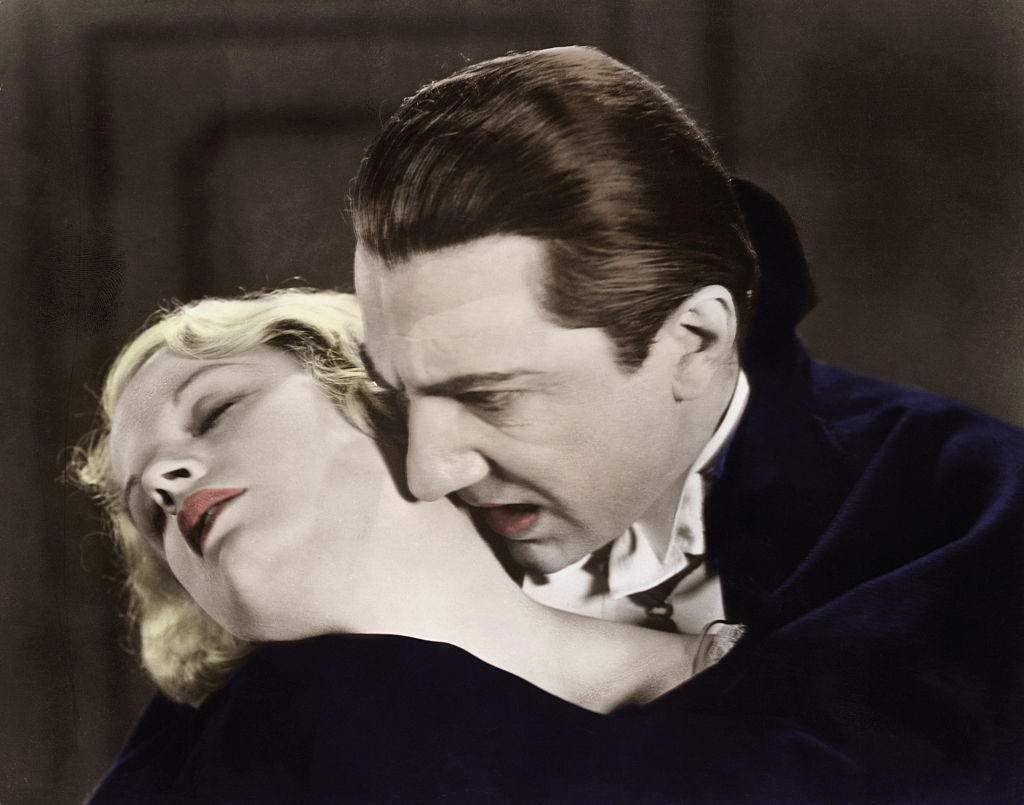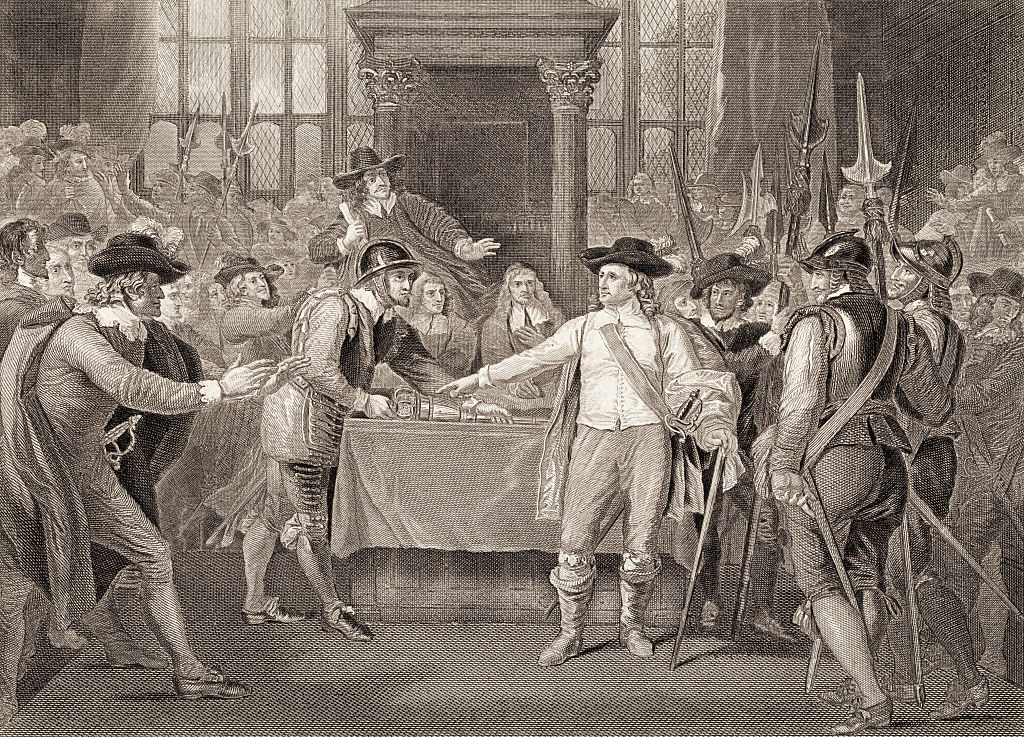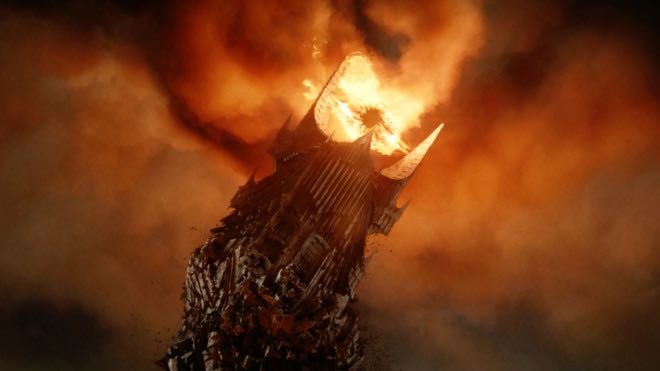Only by resisting the invasion of the spiritual kingdom by the temporal can digital despotism be condemned.
Once Bitten

Conservatism and vampire stories.
One of the most popular figures at Halloween in my childhood was the vampire. I knew the iconic figure then in terms of Bela Lugosi and Christopher Lee acting the lead role in cinematic interpretations of Bram Stoker’s Dracula. Since then, the vampire myth has morphed to contain many more incarnations and popular culture images, many of them quite distant from the myths and traditions from which Stoker borrowed for his classic story.
Beyond the thrill element of the genre, horror in general can be understood as firmly linked to conservative cultural narratives. This has been noticed even by academics, who typically ignore conservative features of any cultural narrative. The slasher genre in film, for example, has been described as a moral commentary on the danger of premarital sex and the use of alcohol and drugs by the young. Movies from the fifties and sixties about invading aliens or marauding giant insects and other creatures have been analyzed as consistent with anti-communist concerns in American culture of that period.
Stories of vampires too, at least the classic ones, are frequently deeply conservative and even traditionally religious. I typically read (or re-read) a great vampire tale around this time of year. This year, I read two of my favorites, Stoker’s Dracula, the grandfather of the genre, and Stephen King’s Salem’s Lot, one of the best vampire yarns of the last half century. This will doubtless horrify the leftist King, but I classify both as conservative novels.
At its core, the vampire myth is incomprehensible without Christianity. The vampire is an undead being, in league with Satan, who seeks to prevent the ascension of human souls into heaven by tying them forever to the world of the flesh. In turning victims into vampires, the vampire ensures they are enslaved to the quest for fresh blood, and blood is symbolic of the material life of the body. The anguished accounts given by vampires in some versions of the narrative of the suffering involved in their fate, eternally trapped in the revolting physicality of blood and flesh, attest vividly to this point.
Vampires are frequently associated with lustful earthiness. For example, consider Lucy Westenra, whose demonic sexuality after turning into a vampire is remarked by all the male characters in the novel who seek to save her soul, and the three seductive female vampires who attack Jonathan Harker in Dracula’s castle, sensuously rendered in Francis Ford Coppola’s Bram Stoker’s Dracula. Vampires are a symbol of the corruption of humankind’s telos in Christianity. It is the perfection of spirit that is sought by the Christian. Vampires seek to disrupt our trajectory upward, to the eternity of souls, and trap us in the corruptible flesh of our mortal bodies.
Both books, and indeed all consistent invocations of vampire mythology, rest on an unquestioned bedrock of Christian symbolism and theology. The vampires are a force of evil, and they rightfully fear the power of good, which is unapologetically presented in the novels as rooted in the Christian faith and its object, the sacrificed Christ. Just as with the horror subgenre of demonic possession—see as the central entry here The Exorcist, which is celebrating its 50th anniversary this year—full participation in the meaning of these narratives arguably requires a deep understanding, and perhaps even a profound immersion in the Christian moral universe. It should be noted more by conservative Christian critics of the popular culture incarnations of this mythology that, in at least the two novels considered here, the good guys win in the end, and the good guys are on the side of the same God they worship.
In Dracula, the character of Mina Murray, Jonathan Harker’s fiancée, is arguably the key to the entire moral meaning of the novel. She is symbolic of purity and Christian virtue, the opposite to Dracula’s polluted wickedness. Every one of the male protagonists in the book essentially worships her as a paragon of selfless love and compassion. She is a virginal mother figure, untouched by the fallenness of iniquity, prepared to sacrifice herself to the good of those under her care.
She has compassion and pity even for Dracula himself, refusing as unchristian the desire of her husband-to-be and his male colleagues for merciless vengeance against the monster. Her Christian desire is to see him too, or the human person he once was, returned to the flock in eternity: “That poor soul who has wrought all this misery is the saddest case of all. Just think what will be his joy when he, too, is destroyed in his worser part that his better part may have spiritual immortality.” When Jonathan talks of his glee at the thought of sending him to Hell, she responds with critical emotion: “In the name of God. Don’t say such things…perhaps…some day…I, too, may need such pity.”
In King’s Salem’s Lot, the story of a vampire who comes to a small Maine town and decimates it, one finds these same conservative elements. King has his protagonist Ben Mears (a writer who represents the author himself) undergo the rite of confession prior to the concentrated pursuit of the vampire Barlow. Mears is—it goes without saying—an unbeliever, and he finds confession oppressive. “There was no sense of catharsis—only the dull embarrassment that went with telling a stranger the mean secrets of his life…he could see how this ritual could become compulsive: as bitterly compelling as strained rubbing alcohol for the chronic drinker or the pictures behind the loose board in the bathroom for an adolescent boy.”
And yet, in King’s narrative, the holy rite is efficacious. It does the work the protagonists need it to do, that is, it protects them from the evil of the vampires. In another scene, we find the Catholic priest of the little village, Father Callahan, facing Barlow over the corpses of the parents of a boy he holds hostage. The vampire wants a showdown with the priest and offers the boy’s life in exchange. Father Callahan wields a crucifix, which is successful at keeping the vampire at bay, but during the exchange, Barlow’s fearsomeness weakens Callahan’s resolve. The cross, which had previously been glowing brightly with a sacred light that repelled the vampire, dims as Callahan doubts its power, and his faith in that power. Just before bringing him into the realm of the undead, Barlow reminds the priest of the theology to which he should have held fast: “You have forgotten the doctrine of your own church, is it not so? The cross…the bread and wine…the confessional…only symbols. Without faith, the cross is only wood, the break baked wheat, the wine sour grapes. If you had cast the cross away, you should have beaten me another night.”
Both books address the difficulty of convincing those in our modern world, and especially those with much education, of the existence of supernatural evil, and each contributes in its way to a metaphysics of the reality of such forces. Van Helsing has to go to extraordinary lengths to bring some of the others in their group to acknowledge that Lucy Westenra has been turned into a vampire and that they face a threat of the gravest order in Dracula. It is Dr. Seward, the man of science, who proves most stubborn in the face of all the evidence Van Helsing musters. In Salem’s Lot, Ben likewise demonstrates a stern commitment to his atheist materialism despite considerable proof of the nature of the horror they face. He only finally comes around when the metaphysical reality of evil and the supernatural power of the God who opposes it become undeniable. As he endeavors to convince a doubtful Susan Norton of the truth, he baldly describes the limits of his skepticism: “I’m hoping for [a rational explanation]. Almost praying for one…[But m]ake connections. The world is coming down around our ears and you’re sticking at a few vampires.”
In the doubts of Dr. Seward and Ben Mears, it is not too much to hear the contemporary sociologist or psychologist, convinced that she is on the right side of history in talking about imprisoned murderers and rapists as victims of an unjust society who just need another chance, and then shaking her head in confusion when the released criminal, after being “reformed” by therapy, kills or rapes again.
How could it be? We know after all that there is no such thing as evil. There is only flawed socialization and an insufficient safety net to catch all those vulnerable to transgression. So too the modern academic is puzzled, and sometimes troubled, by the bountiful empirical evidence of the benefits provided to religious believers by their faith. How could such falsehoods be beneficial to those who accept them?, they wonder.
They might perhaps better understand the limits of their worldview and the way out of their dilemma if they could recognize the moral pedagogical example to be found in vampire tales…which are more than spooky tales for chilly autumn nights.
The American Mind presents a range of perspectives. Views are writers’ own and do not necessarily represent those of The Claremont Institute.
The American Mind is a publication of the Claremont Institute, a non-profit 501(c)(3) organization, dedicated to restoring the principles of the American Founding to their rightful, preeminent authority in our national life. Interested in supporting our work? Gifts to the Claremont Institute are tax-deductible.
The dark history of the radical Left's enforcement arm.
Sokal Squared showed the West’s learned elite has succumbed to a corrupted creed.
The Apollo 8 astronauts worshipped God while circling the moon.
Thanksgiving is a window into our country’s religious heritage.
What we can learn from recent celebrity conversions.






